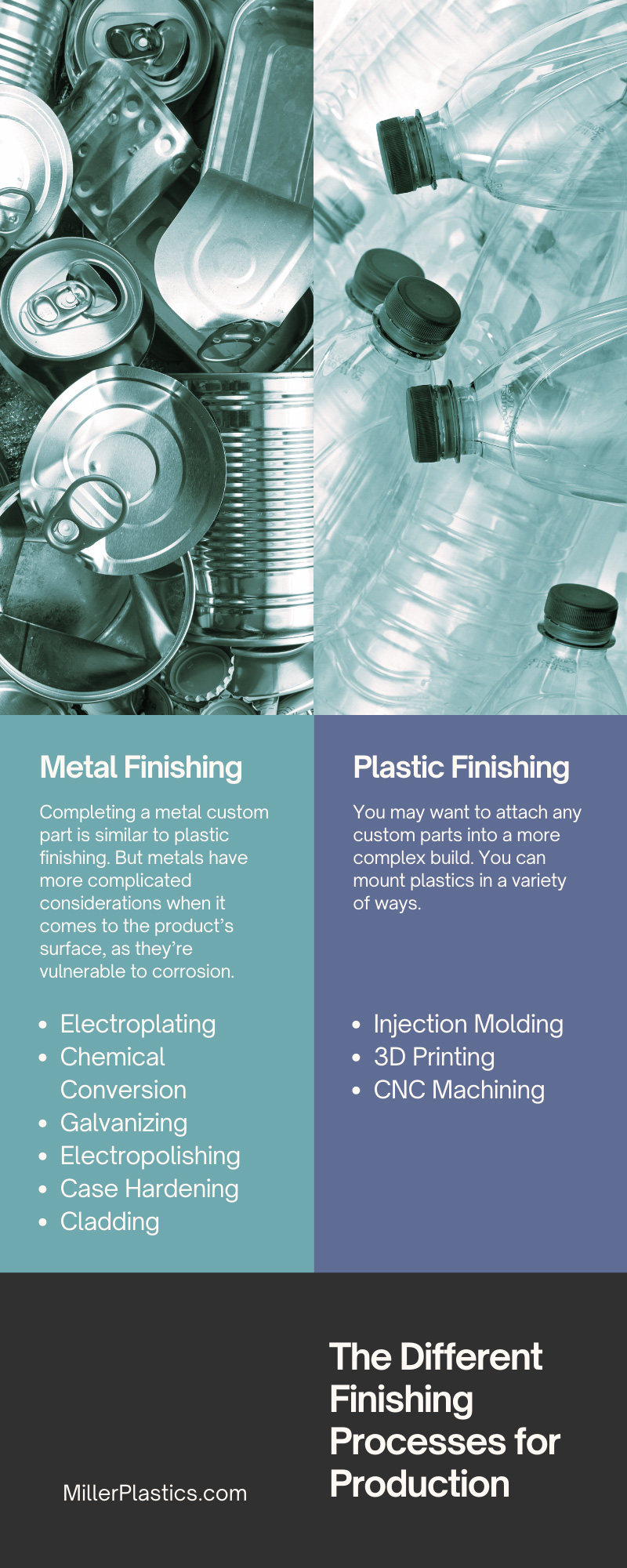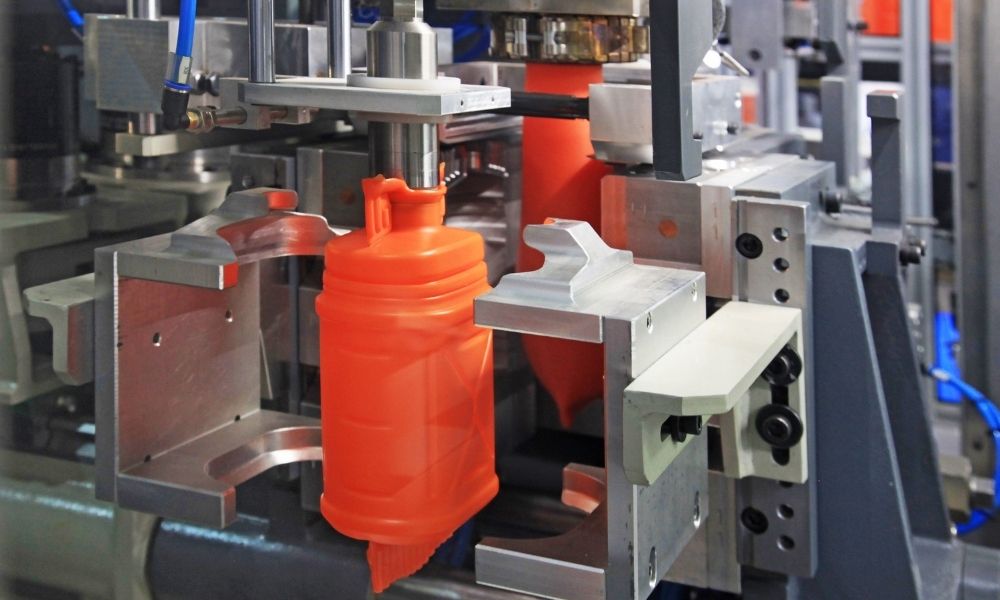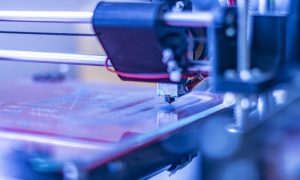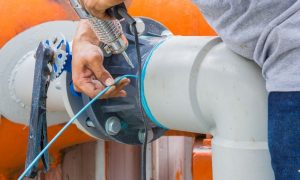Whether you need a metal or plastic part manufactured, you have all kinds of options. You can choose from different methods, materials, value-added services, and more. What about the final step? Learn about the different finishing processes for production so you can make an informed choice.
Once a custom part makes the journey from concept to tangible result, you need to consider how its surface should look and feel. Maybe you need the part to have a texture that will bond to another part. Maybe you want to advertise your company on the product. If you can describe it, your manufacturer can tell you how to make it happen. This guide to finishing can provide an overview and sampling of your available options.
How To Choose
The specifications for your part will likely lead to a particular choice. And if not, the cost of the process might prove the ultimate tiebreaker. As you get familiar with these methods, consider the following:
- Material
- Function
- Durability
- Aesthetics
- Cost
Plastic Finishing
Assembly
You may want to attach any custom parts into a more complex build. You can mount plastics in a variety of ways. A chemical agent that’s compatible with your chosen plastic can create a very stable bond. You might prefer ultrasonic welding, though, as it doesn’t require any drying time. Or you could opt for good, old-fashioned hardware for solid construction.
Finishes
Finishing a custom part depends on which plastic fabrication services you consider, like these examples:
- Injection molding: Once a component emerges from its mold, you must clear it of excess materials. This means a thorough cleaning, and only then can you tailor the texture and add decorations.
- 3D printing: 3D printing isn’t known for its smooth surfaces. You can finish it with sanding, bead blasting, and a method called vapor smoothing.
- CNC machining: If you use this manufacturing technique, you’ll see tool marks and blemishes. If the part’s dimensional integrity is more important than the way it looks, you can leave it as is. Otherwise, you can finish it with bead blasting, powder coating, and electrochemical processes.
Applying Words and Logos
You can customize your part further. You might want to identify the piece, advertise on it, or make it more aesthetically appealing. For plastics, your choices include:
- Engraving: You can add a message or design to the surface with a laser or CNC.
- Etching: The finished effect is similar to engraving, but you achieve it using chemicals.
- Coating: You can apply UV powder electrostatically and then cured it with UV light.
- Silk screening: You can transfer ink directly from a silk screen to the surface.
- Heat transferring: If you prefer to use a label, you can secure it with heat and pressure.
- Pad printing: This method combines elements of the others. It transfers ink onto the plastic surface by using pads that absorb the ink from an etching.
- Hot stamping: A custom hot metal stamping die presses a design onto the part.
Metal Finishing
Different Challenges
Completing a metal custom part is similar to plastic finishing. For instance, applying words and designs to the surface will generally use the same methods as plastics. But metals have more complicated considerations when it comes to the product’s surface, as they’re vulnerable to corrosion.
Possible Methods
Depending on the material and application, you can finish a metal part through one of these processes:
- Electroplating: This method is common in many industries. You plate the part by passing an electric current through dissolved metal ions that adhere to the surface.
- Chemical conversion: This is an umbrella term for different ways to coat a part. Chromating uses hexavalent chromium to produce a protective, reflective finish. Phosphating is the process of prepping a surface for paint; you can apply a material like zinc phosphate by immersing it or spraying it on. You can ward off corrosion with passivation: submerging the part into an acid solution. Another way to resist corrosion is through anodizing, which uses metal salts or acids to form an insoluble metal oxide. And you can change the appearance of a surface with chemical metal coloring.
- Galvanizing: If you don’t need a polished surface, you can use this expensive method to protect metal from corrosion. You apply this coating by immersing your part into molten zinc compounds.
- Electropolishing: This finish is useful for the medical industry. An alkaline or acid solution can smooth a metal surface through a twist on electroplating. The part becomes the anode for electropolishing.
- Case hardening: If your part must withstand impacts and high pressure, case hardening can extend its longevity. You heat and cool the surface of the metal to protect the malleable metal inside.
- Cladding: Sometimes, you can’t use electroplating because the outer coating is too thick to apply. That’s when manufacturers turn to cladding, which sandwiches the part between two pieces of alloy and applies heat and pressure.
Painting Metals
There are three main ways to paint a metal part, but it’s not just about appearance. These finishes can affect durability, too:
- Powder coating: You must charge the powder electrostatically so it adheres to the surface. This also helps it coat the part evenly. Powder coating is extremely durable and scratch resistant, which is why it’s also popular in the automotive industry for tire rims.
- Liquid coating: There’s no real mystery here. You can use everyday paint on a part if you need a specific color. The finish is smooth and all you have to do is wait for it to dry.
- E-coating: That’s the short way of saying “electrophoretic deposition.” After you immerse a component in paint, you electrify it, so the paint will adhere more permanently. One benefit is that you can adjust the thickness of the coating by using different amounts of electricity. E-coating is a good option for complex designs with hard-to-reach spots.
At this point, you either have a thorough grasp of the different finishing processes for production—or many more questions. That’s where Miller Plastics can help. Consult with us on your project, and we can help take your vision from design to finished product. Visit or contact us today.





